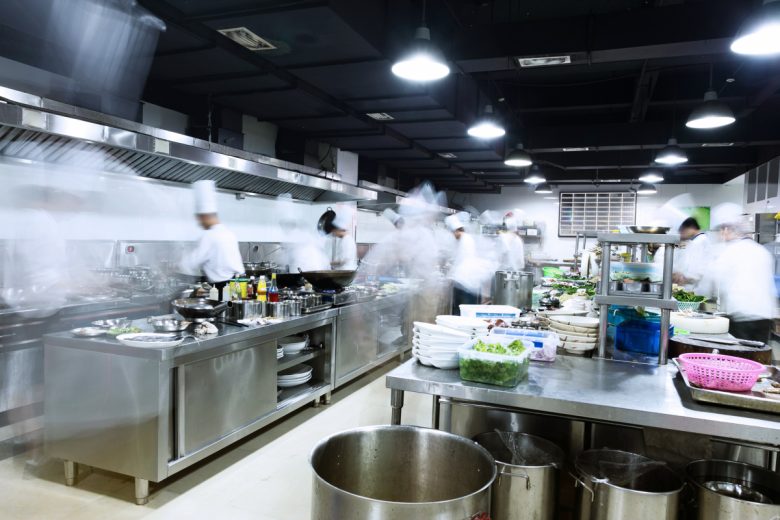Would you like to dine in or carry out? If you love eating out, the answer used to be simple. It used to be one or the other. Nowadays, restaurants are evolving their approach. The lines between drive-thru and dine-in have been blurred. The hybrid restaurant model is increasing in popularity.
In an industry as dynamic and ever-changing as food and hospitality, the concept of a “hybrid restaurant model” has been generating buzz and piquing interest among food service professionals. This innovative model, melding traditional dining with cloud kitchens, is reshaping the landscape, offering a blend of dine-in service with a robust takeout and delivery structure.
But as with any other paradigm shift, while there are significant advantages, some challenges also lurk beneath the surface. This article aims to delve into the nuances of the hybrid restaurant model, illuminating its potential benefits and drawbacks, to provide restaurateurs with a comprehensive understanding of this emerging trend. From potential cost savings and enhanced reach through online platforms to potential complications concerning logistics and quality control, we dissect all facets of this model.
Whether you’re a seasoned restaurant owner contemplating a pivot or an entrepreneur eager to dive into the industry, this balanced examination of the hybrid restaurant model promises valuable insights to inform your decision-making process. Read on to explore how this novel restaurant format could potentially redefine your operations and, possibly, the future of the entire restaurant industry.
Craving the details? Here’s more.
What is the Hybrid Model?
So, what exactly is the hybrid model? A hybrid restaurant model is a blend of a traditional brick-and-mortar dining establishment with other amenities, features, or services. It’s been said that necessity is the mother of invention. And, sometimes, changes don’t happen unless there’s an absolute need.
During the 2020 coronavirus pandemic, the entire restaurant industry was turned upside down. Overnight, businesses were forced to close their doors. And, due to the face-to-face nature of food service, this impacted restaurant owners in a unique way. Business owners had to be creative in order to ensure survival during this difficult time.
The hybrid restaurant model is a newer model. The changing preferences of how people prefer to shop and save time have been catalysts for this model to gain popularity. These changes in how people prefer to spend money and have experiences, can be seen across retail stores as well. Innovation has become standard.
Types of Hybrid Restaurants
The hybrid model offers more than one way of serving customers. Here are some examples:
- Art Cafes: These combine food with an art experience.
- Drive-thru: Smokey Bones Bar & Fire Grill has become the first dine-in restaurant to open a drive-thru-only location. The restaurant chain is capitalizing on customers who are open to the new option of ordering their favorite foods through the drive-thru in a quick-service option.
- Cloud Kitchens: Cloud Kitchens, also called Quick Service Restaurants (QSRs), offer up food that takes a minimal amount of time to prepare. Think of this food as being fast food.
- Food Trucks or Pop-Up Restaurants: Food trucks have been around for a long time, and traditionally operate without a brick-and-mortar presence. However, a traditional restaurant may launch a food truck or a “pop-up” restaurant. This can work well for casual food options and for clientele that enjoys its laid-back vibe.
- Micro Cloud Kitchens: Similar to a cloud kitchen, micro cloud kitchens offer up food that is only delivered. This is perfect for customers who already love your restaurant and want to order but don’t want to leave the house (or can’t leave the office).
Pros of this Model
Before deciding to experiment with a hybrid model, it’s important to consider the benefits and potential drawbacks. Here are some pros of the hybrid restaurant model.
Convenience Being able to offer customers “what they want when they want it”, can set your business apart from the competition. Now more than ever, customers have a reduced tolerance for waiting and delays, unless it’s something they really desire. So, offering them the power of convenience is a strong benefit.
Eliminates Customers’ Barriers
Some customers hesitate to take a chance at a new restaurant. It just isn’t worth the hassle or the time to risk dining in at a restaurant that might be mediocre, or even terrible. However, some of these same customers might be willing to take a chance on this same type of restaurant if a fast, drive-thru experience is available. Offering your food in a faster, quicker format may help you add new customers you would miss out on otherwise.
Income/Revenue
Expanding or even streamlining what you offer brings the opportunity for more money. Expanding revenue should be a goal of every restaurant business. This can help your business thrive during seasonal slumps or tough economic times. You can also integrate sales of non-food items, like cookbooks or other merchandise.
Cracker Barrel has long been known for offering customers items that they can purchase beyond the menu. Each restaurant has a gift shop where customers can shop while they’re waiting for a table.
Publicity/Brand Recognition
By expanding the types of items you offer and how you offer your food and other merchandise, you can naturally generate publicity for your business.
Cons of this Model
This model isn’t without its drawbacks. Here are some things to think about:
Customer Feedback
Customers may not know that there’s a problem with their to-go orders right away. At that point, it may be too late to fix a mistake. Instead of contacting the business about their dissatisfaction, a customer may turn to social media instead. So, there can be potential delays in feedback when it comes to issues with production or food quality.
Delivery Method
A business should carefully decide who will deliver its food. While relying on a third party for the delivery may work, issues with temperature or accuracy may be more difficult to correct and monitor.
It’s important to consider how you will resolve complaints related to temperature. If a customer complains that the food is too hot or too cold, how will this problem be resolved?
Expectations
Launching an offshoot of an original restaurant may seem like an instant recipe for success. However, managing customer expectations is important. There isn’t an overnight formula for success. It’s important to evaluate what’s working, monitor how the new items are being perceived by customers, and stay true to what customers have loved in the past.
Conclusion
The needs and wants of diners are continuing to reshape the restaurant industry. The hybrid restaurant model is changing what we eat and when we eat it. Restaurant owners are serving up more options than ever before. Hungry customers have more options to eat what they want when they want it.
Also read:
7 Goals for a Food Truck Business
Food & Restaurant Subscription Business Models and How They Work
8 Offline Marketing Strategies for Restaurants














Pingback: What is a Hybrid Restaurant Business Model and How Does it Work? – Entrepreneur – Start, Run and Grow Your Business
Pingback: What is a Hybrid Restaurant Business Model and How Does it Work? - junaidarif.live
Pingback: What is a Hybrid Restaurant Business Model and How Does it Work? | Entrepreneur Canada
Pingback: What is a Hybrid Restaurant Business Model and How Does it Work? – Austin Rotter
Pingback: What is a Hybrid Restaurant Business Model and How Does it Work? – Andrea Zanon